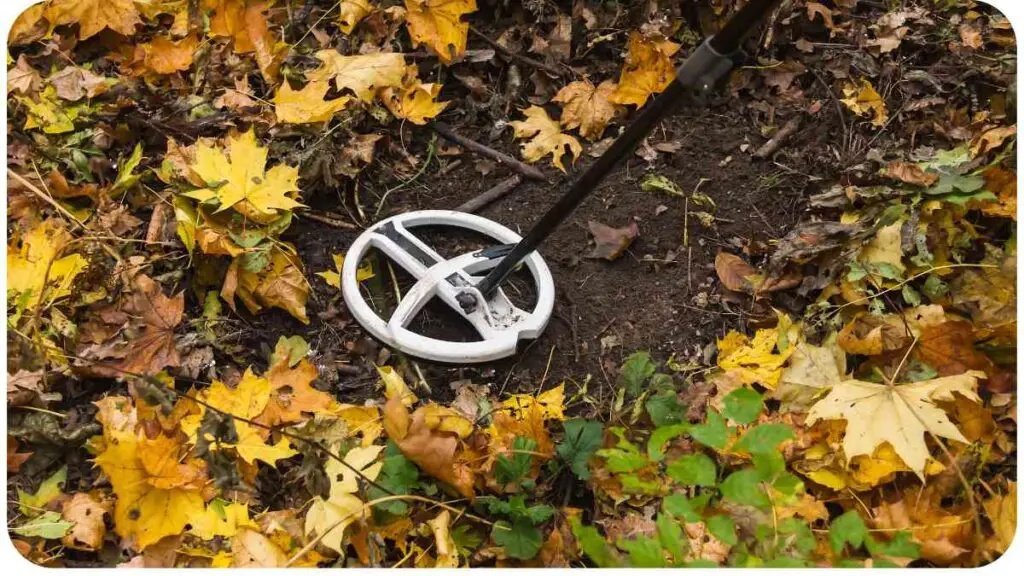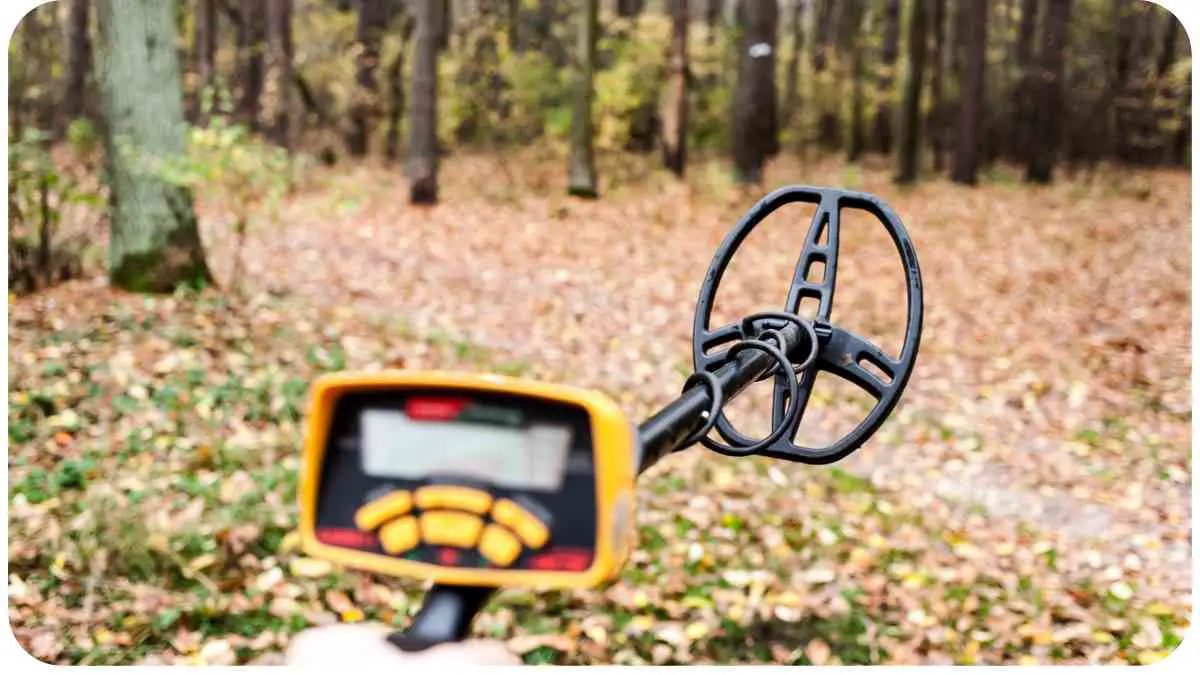Welcome to the comprehensive guide on troubleshooting tips for metal detectors. If you are experiencing difficulties with your metal detector, you’ve come to the right place. Whether you are an amateur enthusiast or a seasoned professional, understanding and resolving common issues with metal detectors can greatly improve your treasure-hunting experience.
In this article, we will delve into the intricacies of metal detectors, explore common problems that can hinder their functionality, and provide you with practical solutions to troubleshoot and overcome these issues. By the end, you will be equipped with the knowledge and techniques needed to make your metal detector function at its best.
| Takeaways |
| Troubleshooting metal detectors is crucial for optimal performance. |
| Adjust the discrimination settings to minimize false signals. |
| Be aware of possible signal interference and take steps to minimize it. |
| Regularly check and replace batteries to ensure proper power supply. |
| Proper calibration and settings are essential for accurate target identification. |
| Consult expert advice and join online communities for valuable insights. |
| Research proven techniques and implement them in your metal detecting practice. |
| Practice regularly in different locations and soil conditions to improve skills. |
| Keep a logbook of your experiences to analyze patterns and learn from mistakes. |
| Proper maintenance and cleaning will prolong the lifespan of your metal detector. |
2. The Basics of Metal Detectors
Before we dive into troubleshooting tips, let’s start by understanding the fundamental workings of metal detectors. Having a grasp of how these devices operate will assist you in identifying potential problems and implementing suitable solutions.
Unlock the full potential of your metal detecting journey with expert tips and tricks. Enhance your skills, improve accuracy, and discover hidden treasures with valuable insights from seasoned metal detecting enthusiasts.
2.1 How Metal Detectors Work

A metal detector essentially consists of a control box, coil, and shaft. When the detector is turned on, the coil emits an electromagnetic field into the ground. If the coil comes into proximity with a metal object, it disrupts the electromagnetic field, leading to a change in the detector’s response which is then interpreted as a potential target.
2.2 Types of Metal Detectors
Metal detectors are available in various types, each tailored for specific applications. Some common types include:
- VLF (Very Low Frequency) Detectors: These are popular among hobbyists and are versatile in detecting different types of metals.
- PI (Pulse Induction) Detectors: Possessing better depth-sensitivity, PI detectors are ideal for searching in highly mineralized soils, saltwater beaches, or underwater scenarios.
- Beat Frequency Oscillation (BFO) Detectors: Simple and affordable, BFO detectors are great for beginners.
Embark on a successful metal detecting adventure with these 10 essential tips. From selecting the right equipment to refining your technique, these insights will guide you in maximizing your finds and enjoying a rewarding hobby.
2.3 Common Components of Metal Detectors
Understanding the different components of a metal detector can aid in identifying potential problems. Some typical components include:
| Component | Description |
| Control Box | Houses the electronics and user interface of the metal detector. |
| Search Coil | Emits and receives the electromagnetic fields during detection. |
| Shaft and Handle | Allows the user to hold and maneuver the metal detector. |
| Headphones | Provides audio feedback for target identification. |
| Battery Compartment | Houses the batteries, supplying power to the detector. |
2.4 Importance of Proper Maintenance
Proper maintenance is key to ensuring the longevity and optimal performance of your metal detector. Regularly cleaning and inspecting various components, including coils and battery connections, can prevent issues that may arise due to dirt, debris, or corrosion. Additionally, staying up-to-date with the manufacturer’s recommendations for maintenance procedures will help preserve the device’s functionality.
3. Understanding Common Issues with Metal Detectors

Despite their reliability, metal detectors can encounter several issues that hamper their performance. It’s crucial to be aware of these common problems to effectively troubleshoot and resolve them. Let’s explore some of these issues:
Navigate the intricacies of metal detecting by understanding and fixing false signals. This comprehensive guide provides practical solutions to ensure your metal detector operates smoothly, minimizing disruptions during your treasure hunts.
3.1 False Positives
One common challenge is receiving signals that indicate the presence of a target when there is none. False positives can be caused by various factors such as mineralized soil, trash items, or electromagnetic interference. To minimize false positives, it’s important to adjust the discrimination settings and discriminate against unwanted targets based on their conductivity or ferrous properties.
3.2 Signal Interference
Signal interference can disrupt your metal detector’s performance, leading to inaccurate readings or reduced detection depth. This interference often stems from external sources such as power lines, radio transmitters, or other metal objects nearby. By adjusting the ground balance, sensitivity, and frequency settings, you can mitigate the impact of signal interference and achieve better detection results.
3.3 Limited Sensitivity
If your metal detector fails to detect targets at an adequate depth, you might be experiencing a sensitivity issue. Various factors can contribute to limited sensitivity, including incorrect ground balance, low battery power, or an insufficient search coil size.
Adjusting the sensitivity settings, ensuring the battery is fully charged, and using search coils suitable for your target depth requirements can help overcome this problem.
Optimize your Minelab Equinox 800 experience by learning how to address common problems. This guide equips you with step-by-step solutions, ensuring a seamless metal detecting journey with your Minelab device.
3.4 Battery Problems
Inadequate battery power can significantly impact your metal detector’s performance. It’s essential to regularly check and replace batteries as needed to ensure optimal functionality. Always have spare batteries on hand during your treasure-hunting expeditions to avoid interruptions caused by depleted power sources.
3.5 Calibration and Settings
Misconfigured calibration or settings can lead to inaccurate target identification or reduced detection capabilities. It’s crucial to pay attention to the calibration process and set the appropriate discrimination, sensitivity, and ground balance levels based on your search conditions and target preferences. Proper calibration and setting adjustments can enhance your metal detector’s accuracy and overall performance.
4. Troubleshooting Tips
Now that we’ve discussed common issues, let’s delve into some practical troubleshooting tips to help you get your metal detector back in working order. These tips will guide you in resolving the problems you may encounter.
Discover the reasons behind your metal detector’s beeping and explore easy troubleshooting solutions. This guide sheds light on potential issues and provides practical steps to resolve them, ensuring uninterrupted treasure hunting excitement.
4.1 Ensure Proper Ground Balance
Proper ground balance is vital for accurate target detection. Different soil types contain varying mineralization levels, which can interfere with your metal detector’s performance. Ensure your detector is properly balanced by following the manufacturer’s instructions.
Adjust the ground balance settings accordingly to compensate for mineralization and achieve better target identification.
4.2 Minimize Signal Interference
To reduce signal interference, it’s essential to choose appropriate search locations away from power lines, fences, or other metal objects that might generate electromagnetic interference. Additionally, adjusting the frequency or sensitivity settings on your metal detector can help minimize the impact of external signals.
4.3 Adjust Sensitivity Settings
If you’re experiencing limited sensitivity, consider adjusting the sensitivity settings on your metal detector. Start with moderate sensitivity levels and gradually increase them until you find the optimal setting for your specific search conditions. However, keep in mind that using the highest sensitivity level may result in more false positives, so strike a balance based on your requirements.
4.4 Replace Batteries
Always ensure you have fresh, fully charged batteries in your metal detector. If you notice diminished performance or the detector fails to power on, it’s a clear sign that the batteries need replacing. Carry spare batteries with you to avoid interruption during your hunting sessions.
4.5 Check Coil Connections
Faulty or loose connections between the search coil and control box can disrupt your metal detector’s functionality. Regularly inspect and ensure that the coil connectors are securely fastened. Additionally, cleaning the connection points and removing any dirt or corrosion can improve performance and prevent signal loss.
4.6 Clean and Maintain Your Metal Detector
Dirt, debris, and corrosion can hamper your metal detector’s capabilities. Regularly clean and maintain your device to keep it functioning optimally. Use a soft brush or cloth to remove dirt from the coils, wipe down the control box, and inspect the search coil for any build-up. Additionally, follow the manufacturer’s recommendations for periodic maintenance and consider using protective covers or cases to safeguard the device.
5. Advanced Troubleshooting Techniques
In some cases, you may encounter more complex challenges while using your metal detector. Here are some advanced troubleshooting techniques to consider:
5.1 Problem-Solving with Discrimination
Discrimination is a valuable feature that allows your metal detector to differentiate between desirable targets and unwanted items. Experiment with different discrimination settings to find the right balance for your specific hunting goals.
By refining your discrimination, you can avoid wasting time on digging up unwanted targets and focus on finding valuable items.
5.2 Overcoming Environmental Challenges
Certain environments can pose challenges for metal detecting, such as highly mineralized soils or saltwater beaches. In such cases, using specialized metal detectors appropriate for those conditions can enhance your chances of successful target detection.
Research and invest in detectors with features like ground balance adjustments or enhanced saltwater capabilities to overcome these challenges.
5.3 Dealing with Target Masking
Target masking occurs when multiple metal objects are closely located and interfere with each other’s signals. This interference can lead to missed targets or inaccurate identification. To address target masking, consider using smaller search coils or adjusting your discrimination settings to separate signals from nearby objects. Additionally, practicing slow and precise scanning techniques can help overcome target masking challenges.
5.4 Understanding Depth Limitations
Different metal detectors have varying depth limitations, meaning they may struggle to detect deeper targets. Keep in mind the capabilities of your detector and adjust your expectations accordingly.
If you are searching for specific depths, consider upgrading to a detector with greater depth capabilities or use additional techniques such as manual ground balancing to improve your chances of finding deeper targets.
6. Professional Tips and Best Practices
As a professional in the field of metal detecting, I would like to share some additional tips and best practices that can enhance your overall experience and maximize your success:
6.1 Seek Expert Advice
Don’t hesitate to seek advice from experienced detectorists or join online forums and communities dedicated to metal detecting. Engaging with fellow enthusiasts and experts can provide valuable insights, tips, and tricks specific to your location, target preferences, and equipment.
6.2 Research and Use Proven Techniques
Stay informed about the latest developments and advancements in metal detecting. Research proven techniques and strategies employed by successful detectorists. By incorporating these methods into your own practice, you can increase your chances of finding valuable targets and improving your overall performance.
6.3 Practice Regularly
Consistency is key when it comes to metal detecting. Take your detector out regularly and practice in various locations and soil conditions. This hands-on experience will enhance your proficiency in using your detector and sharpen your ability to distinguish between different signals and targets.
6.4 Document and Learn from Mistakes
Keep a logbook or digital record of your metal detecting outings. Note down important details such as locations, settings, and notable finds. This documentation will help you analyze patterns, learn from mistakes, and refine your techniques over time. By reviewing your past experiences, you can identify areas for improvement and tailor your approach accordingly.
7. Conclusion
Metal detecting is an exciting and rewarding hobby, but encountering issues with your metal detector can be frustrating. By understanding the basics of metal detectors, common problems, and the troubleshooting tips provided in this guide, you are now equipped with the knowledge and techniques to address and resolve these issues.
Remember to properly maintain your metal detector, adjust settings for optimal performance, and implement advanced troubleshooting techniques when necessary. Seek advice from experts, research proven techniques, and practice regularly to enhance your skills and increase your chances of finding valuable targets.
Further Reading
Here are some additional resources that provide more information on troubleshooting metal detectors:
- Your Guide to Troubleshooting Your Metal Detector: This blog post offers a comprehensive guide on troubleshooting metal detectors, covering topics such as false signals, coil issues, and calibration problems.
- Food Metal Detector Not Working? Check These 3 Issues First: This blog post specifically focuses on troubleshooting metal detectors used in the food industry. It provides insights into common issues like sensitivity loss, product effect, and equipment calibration.
- Metal Detector Problems: Troubleshooting Tips: Discover Metal Detecting offers a helpful article with troubleshooting tips for common problems encountered with metal detectors. It covers issues like target masking, interference, and coil problems.
FAQs
Q: Why is my metal detector giving false signals?
A: False signals can be caused by factors such as mineralized soil, trash items, or electromagnetic interference. Adjusting discrimination settings and practicing proper ground balancing can help reduce false signals.
Q: How can I minimize signal interference with my metal detector?
A: To minimize signal interference, select search locations away from power lines or other metal objects. Adjusting frequency or sensitivity settings on your metal detector can also help mitigate external signal impact.
Q: What should I do if my metal detector has limited sensitivity?
A: Limited sensitivity may be due to factors like incorrect ground balance, low battery power, or unsuitable search coil size. Adjust sensitivity settings, ensure fully charged batteries, and consider using appropriate search coils for your target depth requirements.
Q: Why is my metal detector not turning on?
A: If your metal detector fails to power on, it may be due to depleted batteries. Check and replace the batteries, ensuring they are properly inserted. If the issue persists, inspect and clean the battery connections.
Q: How often should I clean and maintain my metal detector?
A: Regular maintenance is crucial for optimal performance. Clean the detector, coils, and connections after each use to remove dirt and debris. Follow the manufacturer’s recommendations for specific maintenance procedures and use protective covers or cases when not in use.

Hi there! My name is Hellen James, and I’m here to talk to you about treasure hunting. I’ve been a fan of treasure hunting ever since I was a kid, and if you’re a fan of treasure hunting or just like the idea of finding a long-lost fortune, then this blog is for you.

